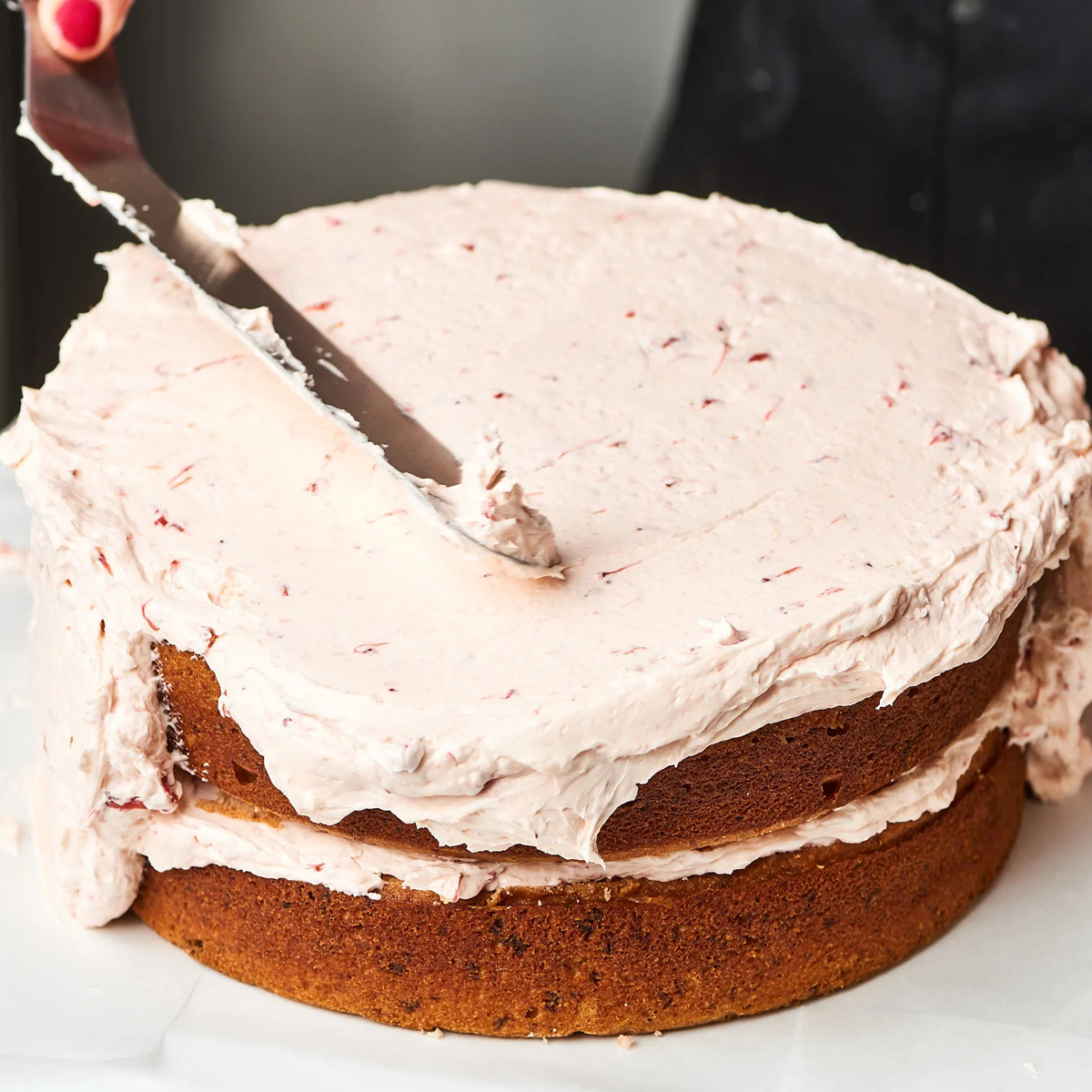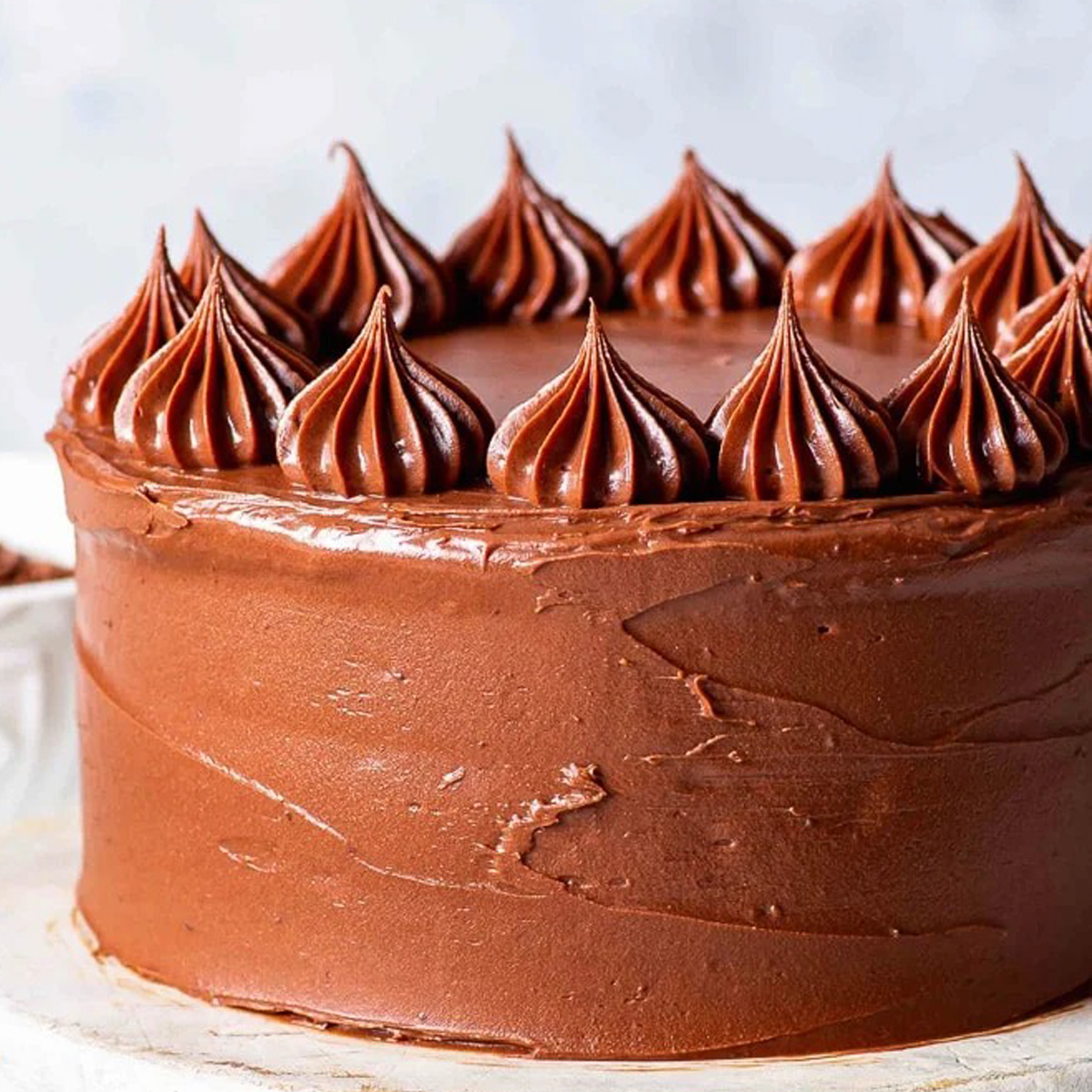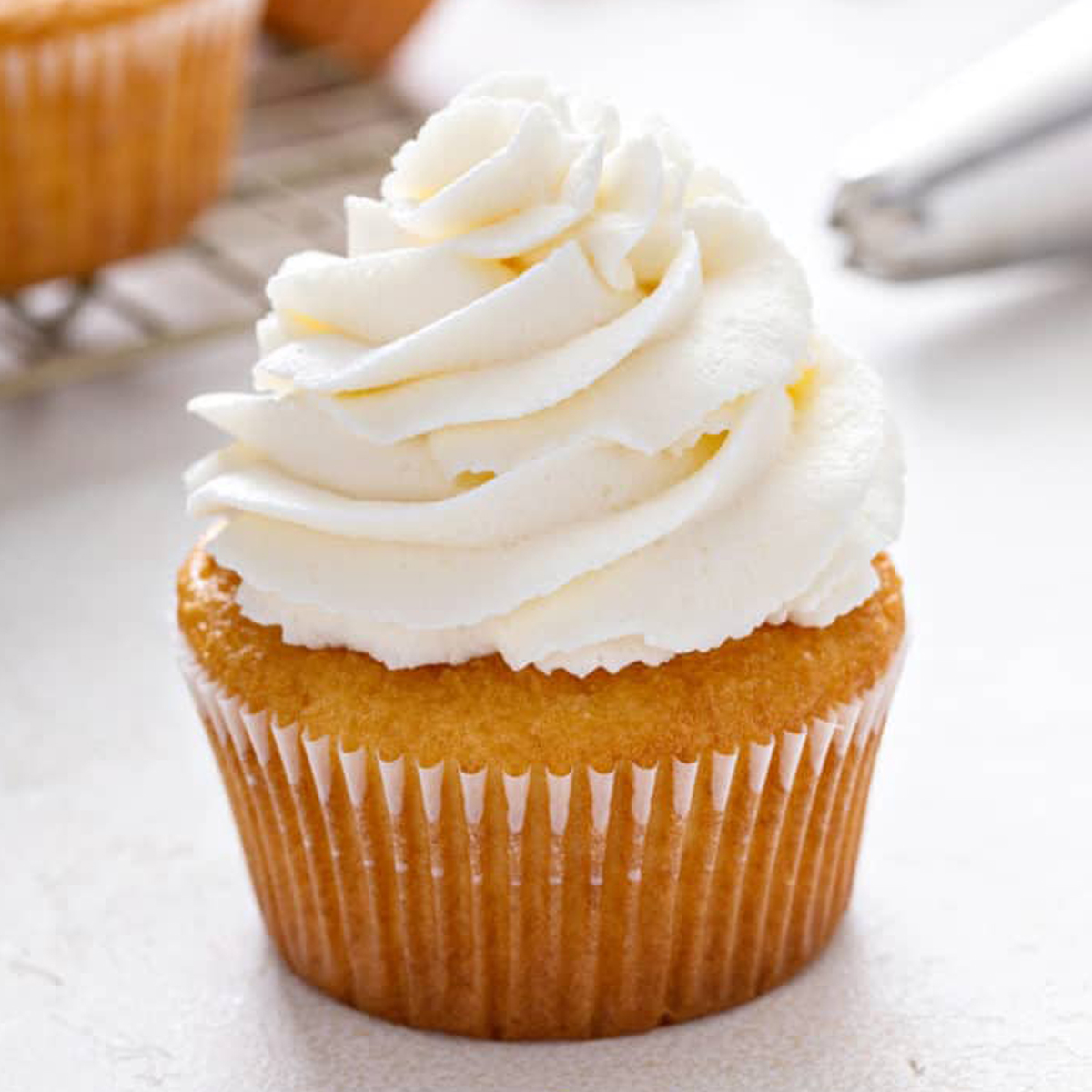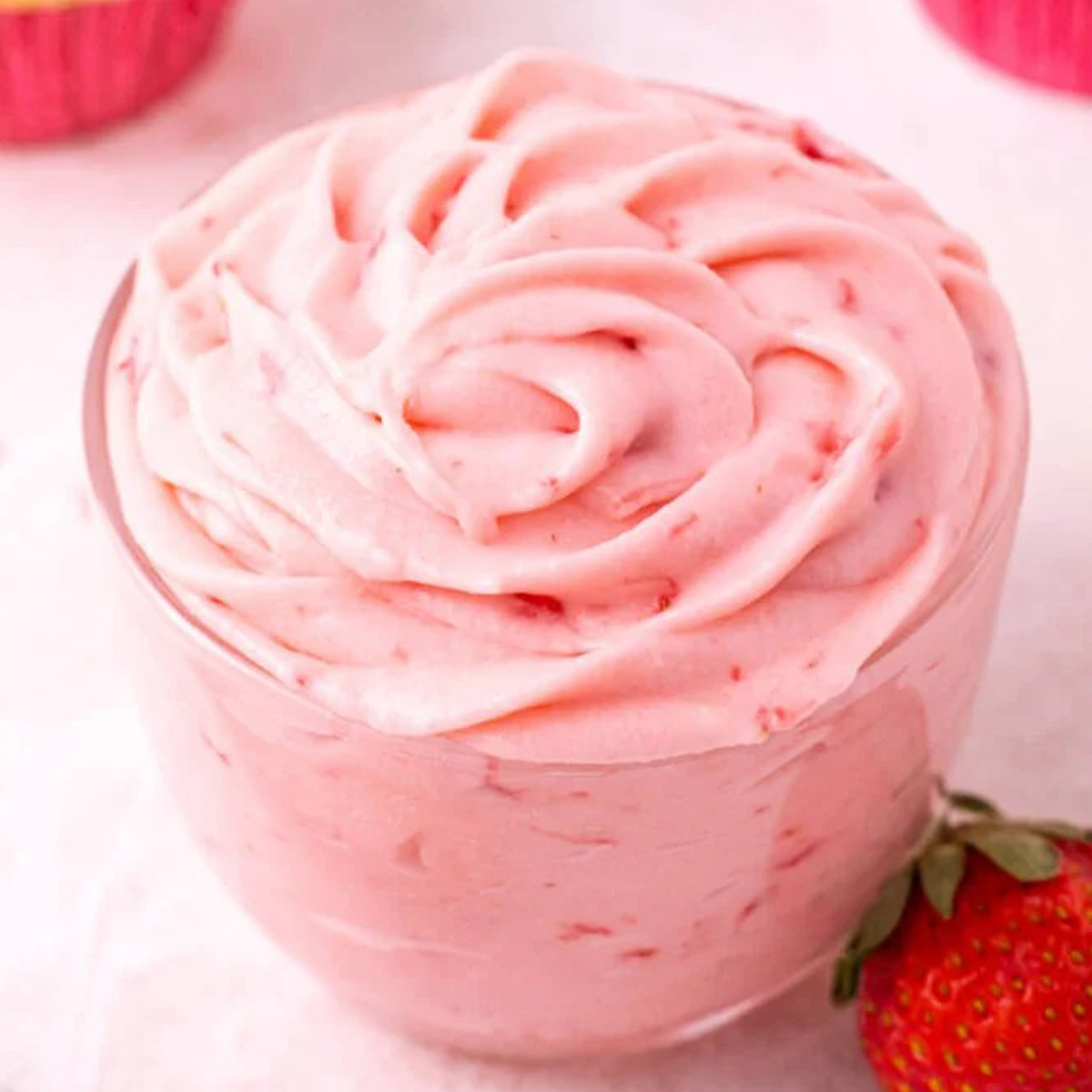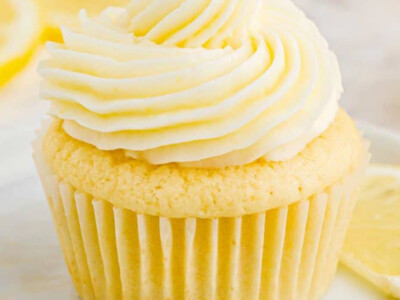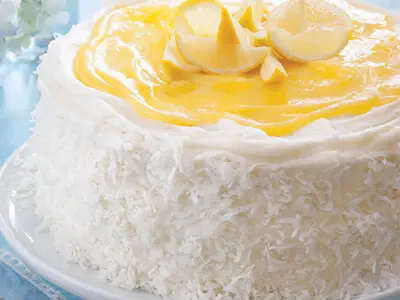The Best Fluffy Pancakes recipe you will fall in love with. Full of tips and tricks to help you make the best pancakes.
Exploring Meringue Frosting
Meringue frosting, often referred to as “meringue buttercream,” is a luscious and elegant frosting that adds a touch of lightness and sweetness to a variety of desserts. This frosting is distinguished by its airy, fluffy texture and delightful balance of sweetness. It is made from simple ingredients, primarily egg whites and sugar, which are whipped together to create a glossy and stable meringue. Meringue frosting is a versatile choice, as it can be flavored and tinted to complement various cakes, cupcakes, and pastries. Whether it’s piped into delicate rosettes on a cake or gently torched to create a toasted finish, meringue frosting adds a touch of sophistication and sweetness to your sweet creations.
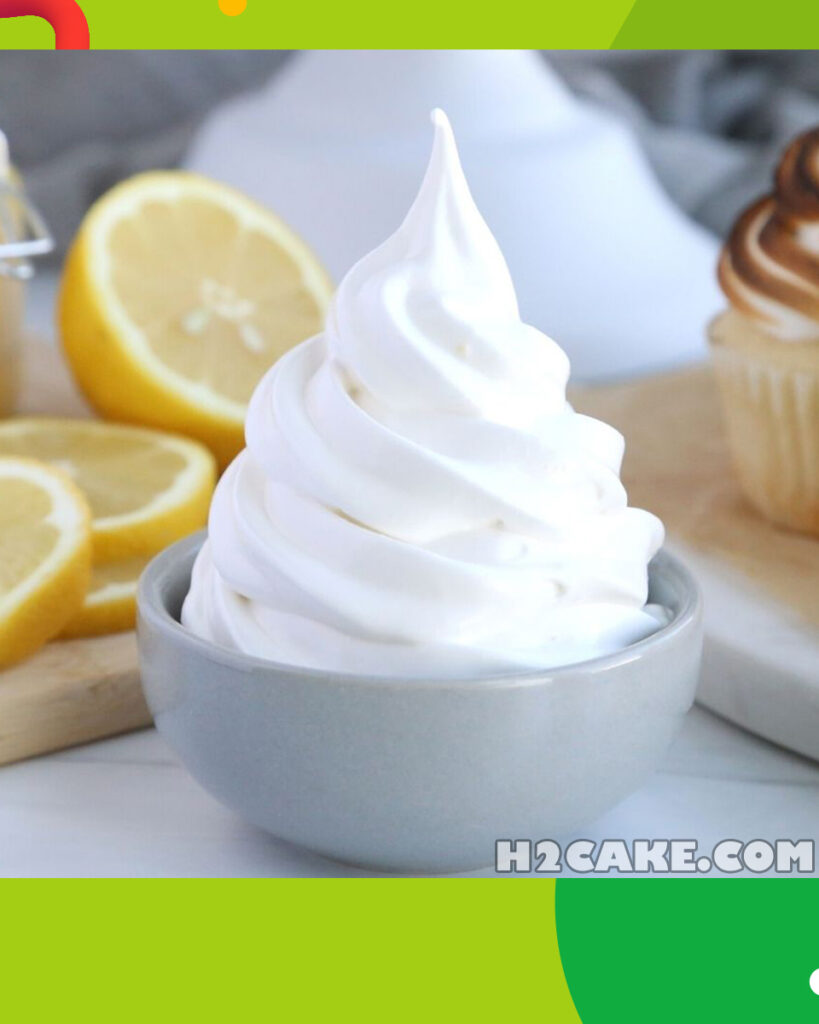
What Is Meringue Frosting?
Meringue frosting, often referred to as “meringue buttercream,” is a type of frosting known for its light, airy, and marshmallow-like texture. It’s made by whipping egg whites and sugar together to create a glossy meringue, which is then combined with softened butter to achieve a creamy and smooth consistency. The result is a delightful frosting that’s both sweet and silky.
Meringue frosting can be flavored in various ways, such as with vanilla extract, chocolate, fruit purees, or other flavorings. It’s a versatile choice for topping cakes, cupcakes, and desserts, and it can be piped into intricate designs or used for decorative touches.
One popular variation of meringue frosting is Swiss meringue buttercream, which involves heating the egg whites and sugar over a double boiler before whipping them into a meringue. This process ensures that the egg whites are cooked and the sugar is dissolved, resulting in a stable and smooth frosting.
Meringue frosting is a favorite among bakers and pastry chefs for its silky texture and ability to hold its shape when piped. It adds a touch of elegance to a wide range of sweet treats.
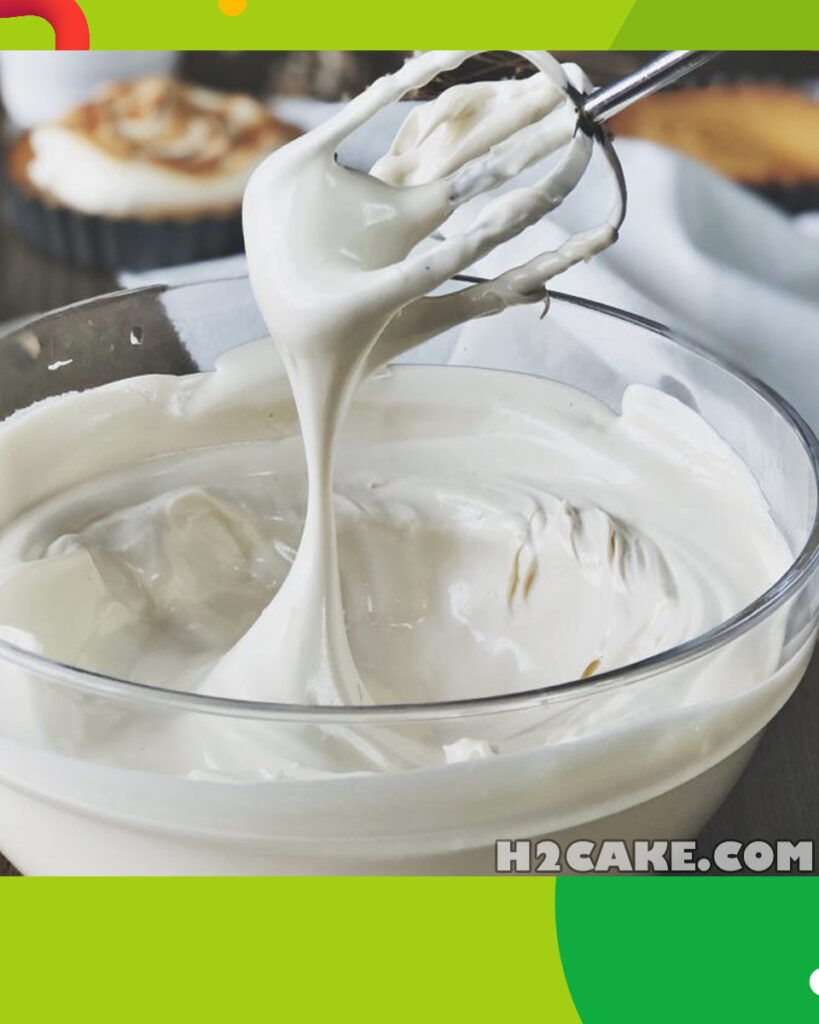
Why You Will Love Meringue Frosting Recipe?
- Light and Fluffy Texture: Meringue frosting has a cloud-like, airy texture that melts in your mouth. It’s incredibly light and not overly sweet, making it a perfect choice for those who prefer a less sugary frosting.
- Versatile Flavor Options: This frosting can be easily customized with a variety of flavors, such as vanilla, chocolate, fruit purees, coffee, or extracts like almond or mint. You can adapt it to complement a wide range of desserts.
- Smooth and Creamy Consistency: When combined with butter, meringue frosting transforms into a smooth and creamy consistency that’s easy to work with. It spreads beautifully on cakes and cupcakes.
- Elegant Cake Decoration: Meringue frosting can be piped into intricate designs and decorations, making it ideal for creating visually stunning desserts. It holds its shape well, allowing for creative decorating possibilities.
- Balanced Sweetness: It strikes a perfect balance between sweetness and the natural flavors of the ingredients. It’s not overly sweet, which makes it an excellent choice for those who prefer a more subtle sweetness.
- Stable and Reliable: Meringue frosting is stable and holds up well in different temperature conditions. It doesn’t melt easily, making it suitable for warm weather or outdoor events.
- Torch for a Toasted Finish: For a unique touch, you can torch meringue frosting with a kitchen torch to create a toasted finish, adding depth of flavor and a visually appealing caramelized look.
- Excellent for Filling and Frosting: Meringue frosting works wonderfully as both a filling and a frosting for layer cakes. It adds a layer of elegance and flavor to your cakes.
- Impressive Dessert Topping: Use it to top pies, tarts, or other desserts for a delightful contrast in texture and flavor.
- Balances Rich Desserts: Meringue frosting complements rich and dense desserts, such as chocolate cake or brownies, by providing a light and fluffy contrast.
- Fun to Make: Crafting meringue frosting can be a fun and satisfying baking project. Watching egg whites transform into a glossy meringue is a rewarding experience.
Overall, Meringue Frosting is a beloved choice for its versatility, elegance, and delightful texture. It’s a favorite among bakers for creating beautifully decorated and delicious desserts.
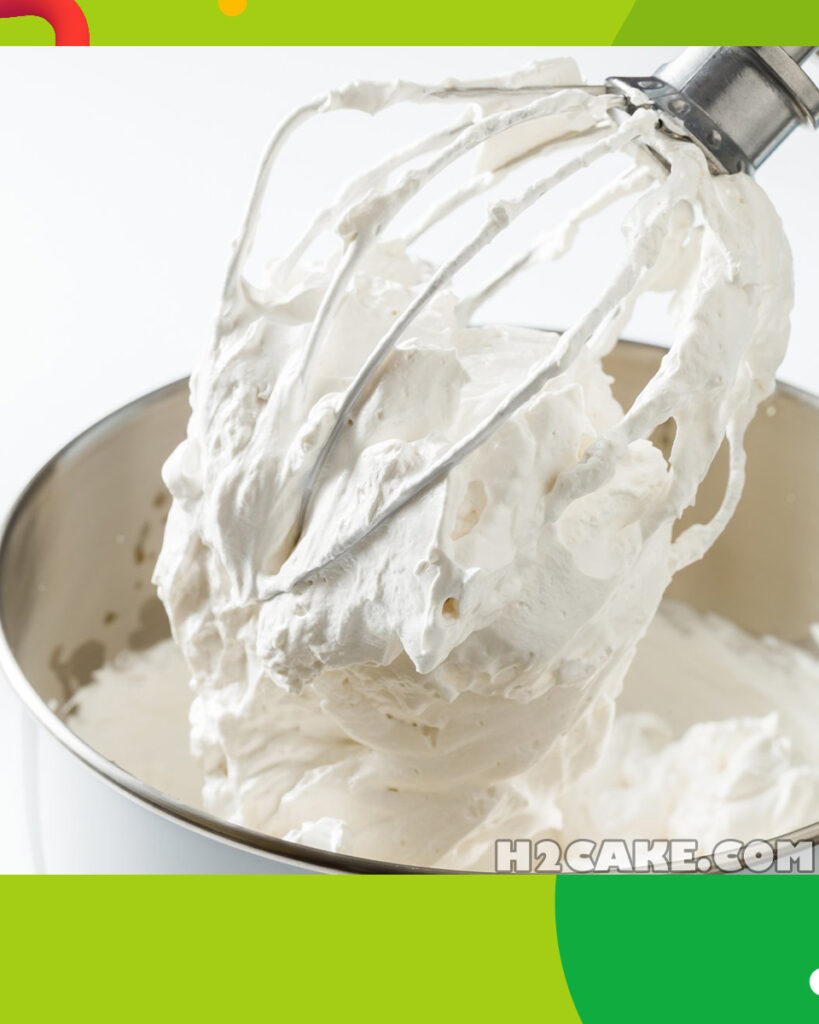
Ingredients For Meringue Frosting
- Egg Whites: 4 large egg whites, at room temperature. Ensure there is no trace of yolk in the whites, as even a small amount of yolk can interfere with the meringue formation.
- Granulated Sugar: 1 cup (200 grams) of granulated sugar. You can adjust the sugar quantity slightly based on your desired sweetness.
- Unsalted Butter: 1 cup (2 sticks or 226 grams) of unsalted butter, softened but still cool. Cut the butter into small cubes for easier incorporation.
- Vanilla Extract: 1 teaspoon of pure vanilla extract (optional). You can use other flavorings or extracts if you prefer.
How To Make Meringue Frosting
Step 1: Prepare the Meringue
- In a heatproof mixing bowl (usually stainless steel or glass), combine the 4 large room temperature egg whites and 1 cup (200 grams) of granulated sugar.
- Create a double boiler by placing the mixing bowl over a pot of simmering water. Ensure that the bottom of the bowl does not touch the water.
- Whisk the egg whites and sugar mixture continuously over the simmering water until the sugar is completely dissolved. This should take about 3-5 minutes.
- To test if the sugar has dissolved, rub a small amount of the mixture between your fingers; it should feel smooth and grain-free.
- Remove the bowl from the heat source and wipe the bottom to prevent any water droplets from getting into the meringue.
Step 2: Whip the Meringue
- Using an electric mixer, start whipping the egg white-sugar mixture on high speed. Continue whipping until stiff, glossy peaks form. This typically takes about 5-7 minutes.
Step 3: Incorporate the Butter
- Once the meringue has cooled to room temperature and has reached stiff peaks, begin adding the softened butter, one cube at a time, while continuing to whip on medium speed. The mixture may appear curdled or soupy at some point, but continue to whip, and it will come together into a smooth consistency.
- After all the butter is fully incorporated, continue to whip for an additional 2-3 minutes until the frosting is fluffy and well combined. If desired, add 1 teaspoon of pure vanilla extract or other flavorings during this step and whip to incorporate.
Step 4: Your Meringue Frosting is ready to use.
- Use it immediately to frost cakes, cupcakes, or other desserts, or store it as needed.
This detailed formula will help you create a silky and delectable Meringue Frosting that’s perfect for adding a light and elegant touch to your favorite baked treats.
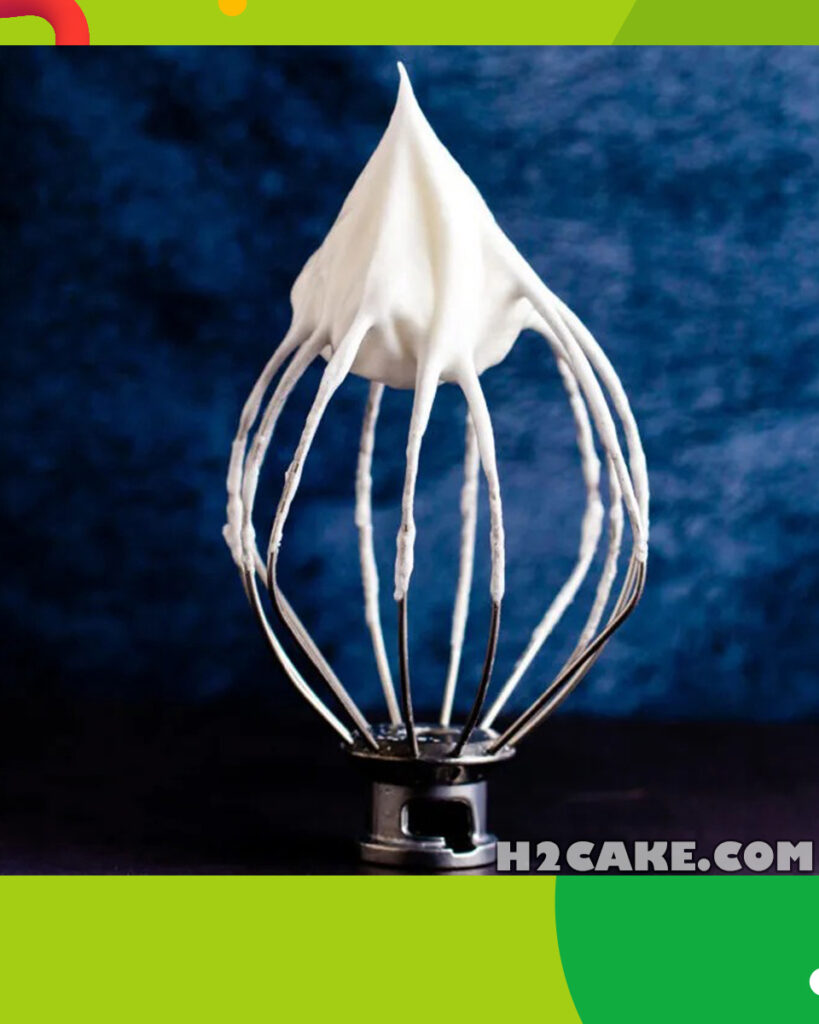
How To Serve Meringue Frosting
Meringue Frosting can be served in various ways, depending on your preference and the dessert you’re pairing it with. Here are some serving suggestions for Meringue Frosting:
- Frosting for Cakes: The most common way to serve Meringue Frosting is as a frosting for cakes. Spread it evenly over the surface of your cake layers, creating a light and fluffy finish. You can leave it smooth or use a spatula to create decorative swirls or peaks.
- Cupcake Frosting: Meringue Frosting is a delightful choice for topping cupcakes. Pipe it onto cupcakes using a pastry bag and a decorative piping tip to create elegant designs or rosettes.
- Baked Alaska: Create a classic Baked Alaska dessert by covering a layer of ice cream with a generous amount of Meringue Frosting. Use a kitchen torch to toast the frosting until it’s lightly browned for a beautiful finish.
- Lemon Meringue Pie: Meringue Frosting is a key component of a classic Lemon Meringue Pie. Pile it high on top of a lemon-filled pie and bake it briefly to achieve a golden, toasted appearance.
- Tarts and Pies: Use Meringue Frosting as a topping for tarts or pies, especially those with fruity fillings like lemon, lime, or raspberry. Spread it over the filling and lightly brown it with a kitchen torch for a delightful contrast in textures.
- Mousse and Parfaits: Layer Meringue Frosting with mousse or parfait in dessert glasses for a light and elegant dessert presentation. Top it with fresh berries or a drizzle of sauce for added flavor.
- Fillings: Meringue Frosting can be used as a filling between cake layers or in dessert sandwiches. It adds a wonderful layer of flavor and texture.
- Decorative Dessert Toppings: Spoon Meringue Frosting into a piping bag with a star tip and pipe decorative accents onto desserts like fruit tarts, éclairs, or cream puffs.
- Meringue Kisses: Dollop spoonfuls of Meringue Frosting onto a baking sheet and bake at a low temperature until they are crisp on the outside and chewy on the inside. These are often called “Meringue Kisses” and make for delightful bite-sized treats.
- Dessert Swirls: For a quick and elegant dessert, spoon Meringue Frosting onto dessert plates in decorative swirls and serve with fresh fruit or a drizzle of sauce.
- S’mores: Create a gourmet s’mores experience by spreading Meringue Frosting onto graham crackers, topping with chocolate, and briefly toasting it with a kitchen torch before sandwiching it with another cracker.
- Layered Trifles: Layer Meringue Frosting with cake cubes, fruits, and custard to create a luscious trifle dessert.
Remember to customize the flavor of your Meringue Frosting with different extracts or flavorings to match your dessert and personal preferences. Meringue Frosting adds a touch of elegance and lightness to a wide range of sweet treats.
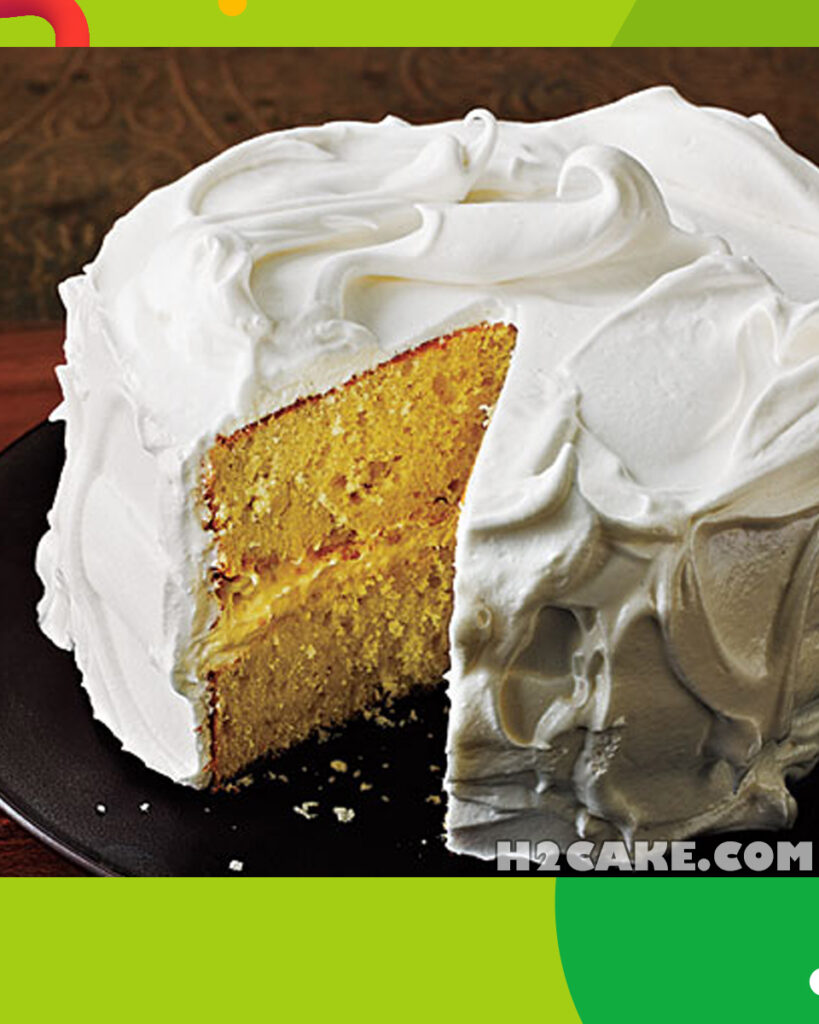
How To Store Meringue Frosting
Storing Meringue Frosting properly is essential to maintain its texture and prevent it from deflating or separating. Here’s how to store Meringue Frosting:
1. Airtight Container:
- Transfer any leftover Meringue Frosting to an airtight container. Ensure that the container is clean and free of any grease or moisture, as even a small amount of moisture can affect the stability of the frosting.
2. Seal It Well:
- Press plastic wrap directly onto the surface of the frosting to create a seal. This helps prevent a crust from forming on the top of the frosting.
3. Refrigeration:
- Store the airtight container in the refrigerator. Meringue Frosting contains egg whites, so it’s important to keep it refrigerated to prevent bacterial growth. It can be stored in the refrigerator for up to 3-4 days.
4. Re-Whipping:
- Before using the stored Meringue Frosting, allow it to come to room temperature for about 30 minutes to 1 hour. This allows the frosting to soften and become more manageable. After it reaches room temperature, re-whip the frosting using an electric mixer until it regains its light and fluffy texture. If it appears separated or curdled initially, continue whipping, and it should come together.
5. Do Not Freeze:
- Meringue Frosting doesn’t freeze well because the texture may change significantly upon thawing. It’s best to make it fresh or store it in the refrigerator for short-term use.
Remember that Meringue Frosting is best when it’s freshly made, as its texture can deteriorate over time. If you anticipate having leftovers, try to make only the amount you need for your specific baking project to ensure the best quality. Proper storage and re-whipping can help revive the frosting for use in desserts and cakes.
If You Love This Recipe Try These Out!
- Rich And Silky Chocolate Cream Cheese Frosting
- Mastering The Art Of Frosting
- The Art Of Marshmallow Frosting
- Cream Cheese Frosting Elegance
Tips And Tricks For Meringue Frosting
Meringue Frosting, known for its light and airy texture, can be a bit tricky to perfect. Here are some tips and tricks to help you achieve the best results when making and working with Meringue Frosting:
1. Room Temperature Egg Whites:
- Start with room temperature egg whites. Cold egg whites are less likely to whip to stiff peaks, and room temperature eggs create a more stable meringue.
2. Clean and Grease-Free Tools:
- Ensure that your mixing bowl, beaters, and utensils are completely clean and free of any grease or residue. Even a tiny amount of grease can prevent the egg whites from whipping properly.
3. No Yolk Contamination:
- Be very careful when separating egg whites from yolks. Even a small amount of yolk in the whites can prevent proper meringue formation. It’s a good practice to separate each egg into a small bowl first and then transfer the whites to the main mixing bowl one by one.
4. Gradual Sugar Addition:
- Add the granulated sugar to the egg whites gradually while whipping. Slowly incorporating the sugar helps stabilize the meringue and prevents it from deflating.
5. Check for Stiff Peaks:
- Whip the egg whites and sugar mixture until you achieve stiff, glossy peaks. Stiff peaks should stand up straight when you lift the beaters, and the meringue should look smooth and glossy.
6. Cool Meringue Before Adding Butter:
- Ensure that the whipped meringue has cooled down to room temperature before adding softened butter. Warm meringue can cause the butter to melt and result in a soupy frosting.
7. Gradual Butter Incorporation:
- Add the softened butter to the meringue gradually, one cube at a time, while mixing at medium speed. The frosting may temporarily appear curdled or soupy, but continue to mix until it becomes smooth.
8. Re-Whip If Needed:
- If your frosting appears curdled or soupy after adding the butter, don’t worry. Continue to whip it, and it should come together into a smooth texture. If necessary, you can briefly place it in the refrigerator to firm up the butter and then re-whip.
9. Flavoring Options:
- Customize your Meringue Frosting with various flavorings, such as pure vanilla extract, almond extract, or other extracts, to match your dessert’s flavor profile.
10. Torch for a Toasted Finish:
- If you desire a toasted appearance, use a kitchen torch to lightly brown the surface of the frosting. This adds a pleasant contrast in texture and flavor.
11. Use Fresh Frosting:
- Meringue Frosting is best when freshly made. It can become less stable over time, so try to use it as soon as possible after preparation.
12. Store Properly:
- If you need to store any leftover Meringue Frosting, follow proper storage instructions, including refrigeration and re-whipping before use.
By following these tips and techniques, you can create a beautifully light and stable Meringue Frosting that elevates the flavor and presentation of your desserts.
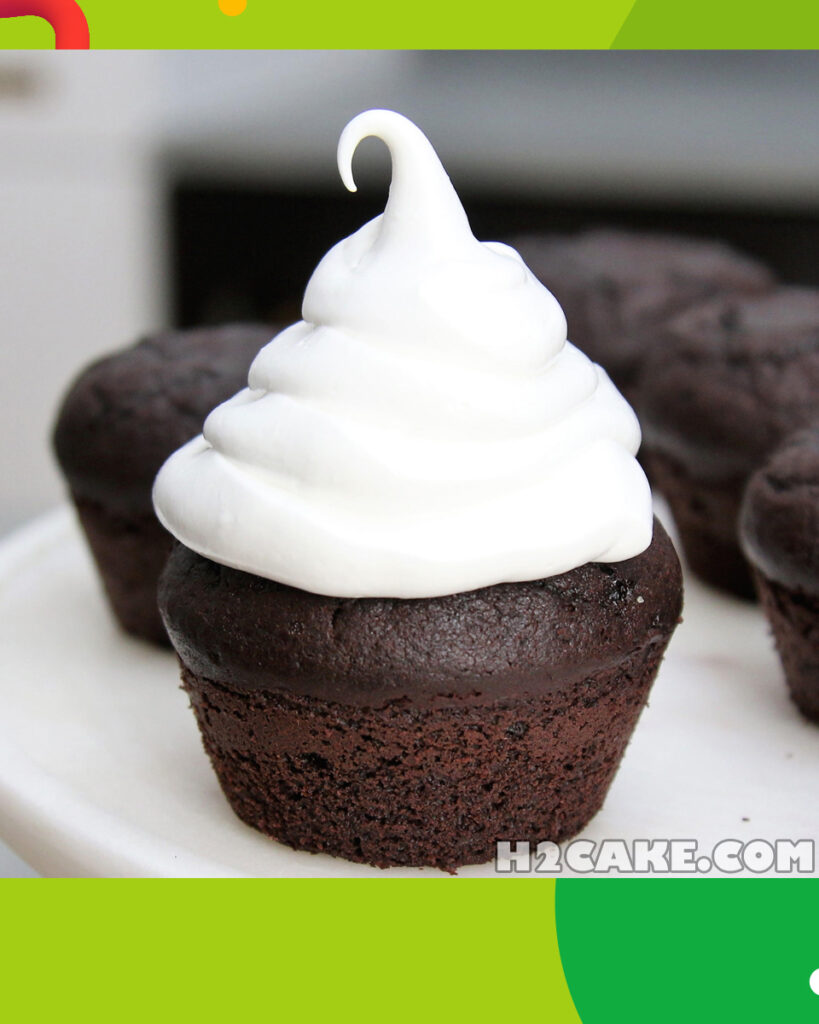
FAQs And Troubleshooting
Frequently Asked Questions:
1. Can I make Meringue Frosting in advance?
- Yes, you can make Meringue Frosting in advance. Store it in an airtight container in the refrigerator for up to 3-4 days. Be sure to re-whip it before using to restore its texture.
2. Can I freeze Meringue Frosting?
- Freezing Meringue Frosting is not recommended as it can significantly alter its texture upon thawing. It’s best to make it fresh or store it in the refrigerator for short-term use.
3. Why does my Meringue Frosting appear curdled or soupy?
- If your frosting appears curdled or soupy after adding the butter, it may be due to temperature differences between the meringue and butter. Continue whipping, and it should come together. If it doesn’t, try briefly chilling it in the refrigerator and then re-whipping.
4. Can I use salted butter for Meringue Frosting?
- While it’s best to use unsalted butter to control the saltiness of the frosting, you can use salted butter if that’s what you have. However, be cautious with additional salt in the recipe.
5. How do I achieve a toasted finish on Meringue Frosting?
- To achieve a toasted appearance, use a kitchen torch. Gently torch the surface of the frosting until it’s lightly browned. Keep the torch moving to avoid burning or melting the frosting.
Troubleshooting:
1. My Meringue Frosting is runny. What should I do?
- If your frosting is too runny, it may be due to warm ingredients. Place it in the refrigerator for 15-30 minutes to cool, then re-whip until it reaches the desired consistency.
2. My frosting is too sweet. Can I reduce the sweetness?
- To reduce the sweetness of Meringue Frosting, you can add more unsalted butter and continue whipping until the sweetness is balanced to your liking. Alternatively, a pinch of salt can help cut the sweetness.
3. Why is my Meringue Frosting grainy?
- A grainy texture can result from using cold ingredients or insufficient mixing. Ensure your egg whites and butter are at room temperature and continue to whip until smooth.
4. My Meringue Frosting has air bubbles. How can I remove them?
- To remove air bubbles, gently tap the mixing bowl on the countertop to release trapped air. You can also use a spatula to smooth the surface before decorating.
5. My frosting is too yellow. How can I lighten the color?
- The color of Meringue Frosting can vary based on the color of your egg whites. For a lighter color, use egg whites from pale yellow eggs or add a small amount of white food coloring.
6. Can I use a hand mixer instead of a stand mixer?
- Yes, you can use a hand mixer to make Meringue Frosting. It may require a bit more effort and time compared to a stand mixer, but it can achieve the same results.
Remember that practice and patience are key when working with Meringue Frosting. It may take a few tries to get the texture and flavor just right, but with experience, you’ll master the art of making this delightful frosting.
Nutrition Information
Here’s a general approximation of the nutritional information for Meringue Frosting per 1-ounce (approximately 2 tablespoons) serving:
Calories: 120-140 calories, Total Fat: 11-13 grams, Saturated Fat: 7-8 grams, Cholesterol: 30-35 mg, Sodium: 25-30 mg, Total Carbohydrates: 5-7 grams, Sugars: 5-6 grams, Protein: 1-2 grams
Please note that these values are approximate and can vary based on factors such as the amount of butter used and any additional flavorings or ingredients incorporated into the frosting. Meringue Frosting is a rich and indulgent topping, so it’s best enjoyed in moderation as part of your dessert or cake.

